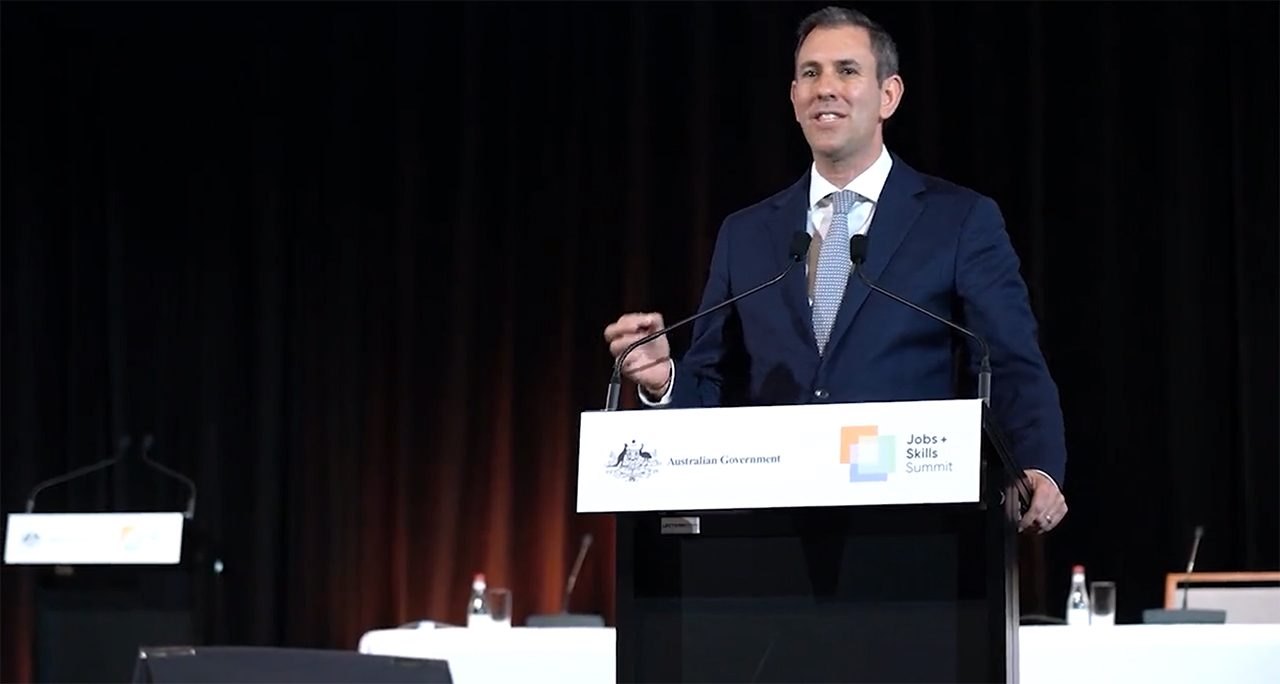This article is from the Australian Property Journal archive
THE government has been urged to address worker shortages in the construction sector at the Jobs and Skills Summit, which continues today in Canberra, while unions and employers agreed to increase migration intake.
UDIA National called on the government to fast-track initiatives that resolve shortages in the construction workforce, including the need for tradespeople, skilled subcontractors, civil engineers, and town planners, through migration, jobs and training, to ensure there is enough labour in the short and medium term, to reduce delays and bolster capacity.
“Our economy will struggle if training and skills targets are not expanded and fast-tracked. Even if migration figures increase, Australia still faces the challenge of being internationally competitive to attract the right talent,” said Max Shifman UDIA National President.
Construction currently represents 11% of the national workforce, Shifman said, adding that delays from skilled worker shortages in the industry is contributing to a steep increase in costs and a rapid decline in housing affordability, and the shortage of workers over the last two years has delayed housing construction by six to 18 months.
Shifman said a lack of large developments has seen apartment approvals fall to their lowest level in more than 10 years, as builders baulked at new projects amid high construction costs, worker shortages and rising interest rates.
Arcadis Constructions Costs Index Report suggests job vacancies are up 80% since late 2019, and about 105,000 more workers are needed in less than 18 months according to the Australian Constructors Association. This is almost 50% greater than the number of people who are qualified to fulfil the roles, the Arcadis report said.

Ahead of the summit, unions and employers reached a consensus to increase annual migration intake from 160,000 to 200,000 places to fix labour shortages. However, disagreements remain over visa conditions and pay rates for skilled foreign workers.
Every dollar spent on housing construction flows into 40-plus sectors and generates $2.90 into the broader economy, Shifman said.
Prime Minister Anthony Albanese and Treasurer Jim Chalmers opened the summit.
In his speech, PM Albanese said he wants to see more Australians gaining the skills they need to find good jobs, in areas of national priority.
The PM outlined the Summit’s agenda, which seeks to address:
- Staff and skill shortages
- Missing links in supply chains
- Growing demand on our caring and community sector
- An energy grid past its use by date
- Structural barriers that deny women equality – in opportunity, in pay and in financial security
- And the squeeze of stagnant wages and rising living costs.
Treasurer Chalmers spoke about the combined pressure that these forces are placing on the Budget and the economy.
“When Bob Hawke brought the National Economic Summit to the old building down the hill in 1983, he concluded his opening remarks with a quote from John Curtin, summoning ‘the inherent quality’ of the Australian people to face the crisis ahead. That summit of 1983 is as many years removed from us, as the Second World War was from them – just think about that.
“Time, trade and technology mean we confront a very different set of challenges in our globalised world, the world has been transformed. We don’t have the same levers to pull.
“But the ‘inherent quality’ of the Australian people remains a constant.” Albanese said.
Australian economy “older, fatter, slower”
In her keynote address the summit, Grattan Institute CEO Danielle Wood said the Australian economy, “like all of us, looks increasingly older, fatter, and slower,”
“This summit comes at an extraordinary time. Unemployment is lower than I’ve experienced in my lifetime, and we are in the early phase of significant structural shifts in jobs and activity as our economy decarbonises and digitises.
“This is a summit for grappling with how we manage those transitions and embrace the challenge of creating a more productive and dynamic future.”
Women in the workforce was a focus of day one. Minister for Women Katy Gallagher told the summit that if the women’s workforce participation rate matched men, GDP would increase by 8.7% or $353 billion by 2050.
Michele O’Neill, president of the Australian Council of Trade Unions, said Australia has the world’s second-worst paid parental leave scheme among the most expensive childcare.
Australia’s chief scientist Cathy Foley said more women and girls are needed into science and maths to meet the demand of those industries in the future.
Retail sector doesn’t require “big structural reform”: ARA
In his address to the Jobs and Skills Summit, Australian Retailers Association (ARA) CEO Paul Zahra had six key items on his agenda. They included mobilising more mature age workers, improving the affordability and flexibility of childcare, increasing investment in retail traineeships to future-proof the sector and provide more employment opportunities, pursuing greater flexibility in part-time work arrangements for both employer and employee, seeking national consistency around workforce participation for teenagers, and increasing the skilled migration intake, with a focus on hard-to-fill digital and data roles.
The retail industry employs one in 10 Australians.

In this year’s annual wage review, the ARA support and recommend a wage increase, but aligned to the underlying rate of inflation.
“We saw this as a fair compromise between cost-of-living pressures for employees and the higher costs of doing business for our members,” Zahra said, adding that a high proportion of higher wages comes back into retail as discretionary spending.
In its wage review submission, it said any increase in wages above underlying inflation would need to be offset by productivity gains.
“And as we see the impacts of sustained supply chain challenges, labour shortages and severe cost of doing business increases impact our sector, improving productivity continues to be a critical need and an ongoing challenge.
“Improved productivity is another win-win outcome, and diverse workplaces are more productive workplaces. When our teams are more productive, it improves morale, elevates resources and reduces the overall demands on our staff particularly during a labour crisis.”
He said greater productivity in the retail sector “doesn’t require big structural reform”.
“It’s simply a function of providing greater flexibility in part-time secure work arrangements that allow businesses to commit to base hours and be able to flex-up hours to meet consumer demand whilst also providing more employees with the option of more hours.”
70% of clean energy workforce in regional Australia
The summit also heard Clean Energy Council chief executive Kane Thornton say that 70% of the renewable energy workforce is currently located in rural and regional areas. Up to 600,000 jobs could be generated is the federal government hit its target of 82% energy in the electricity grid by 2030.




